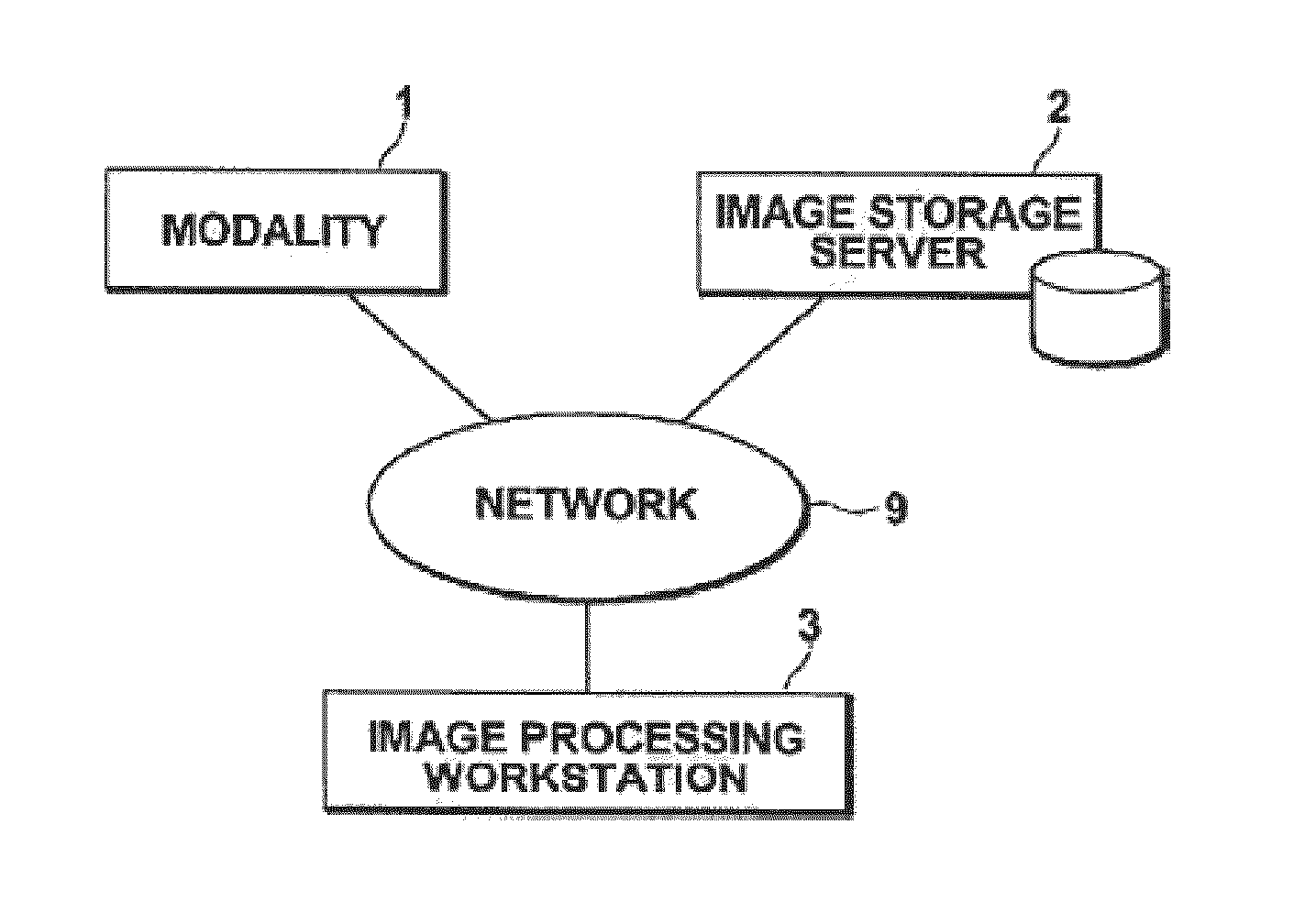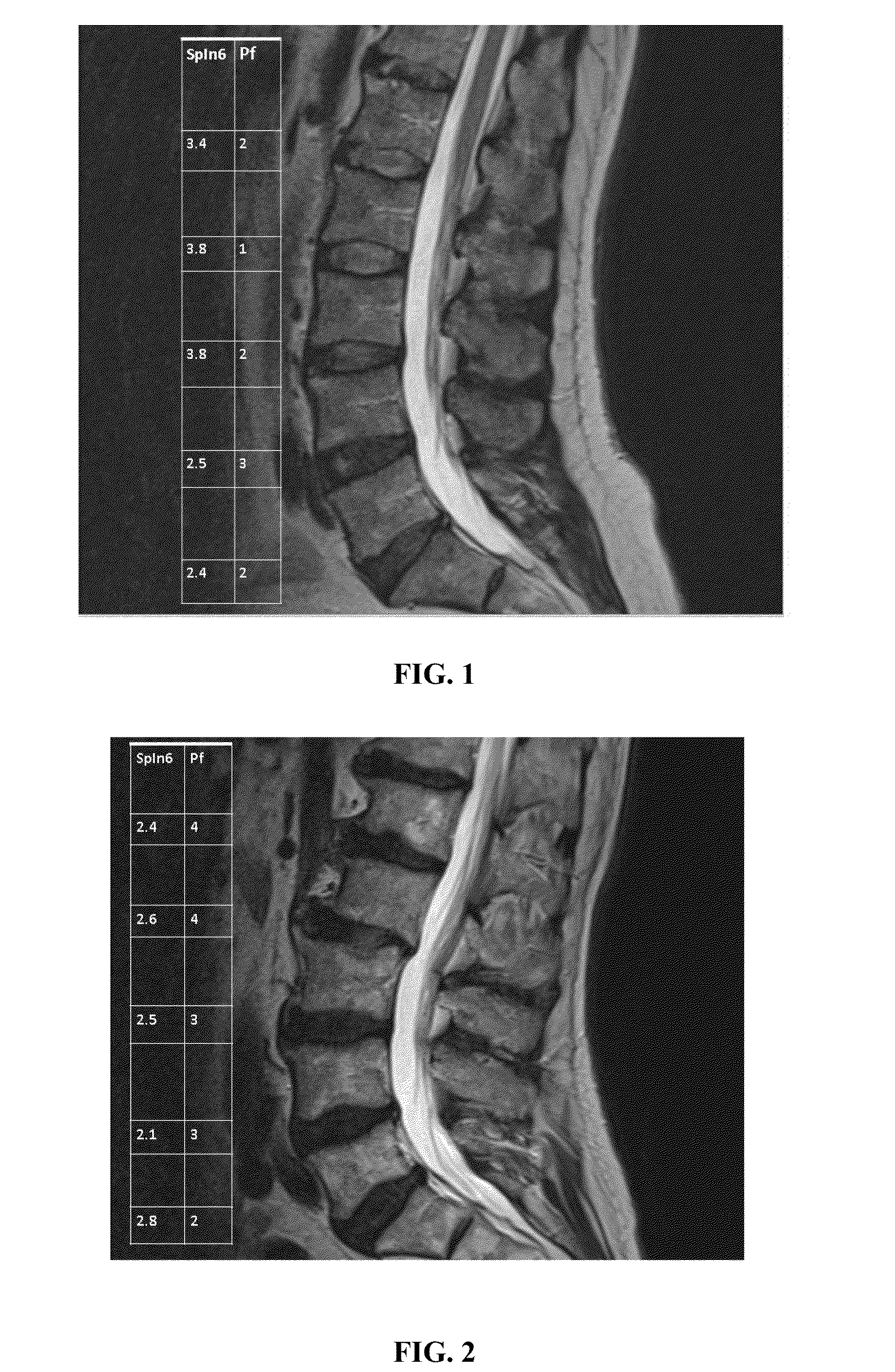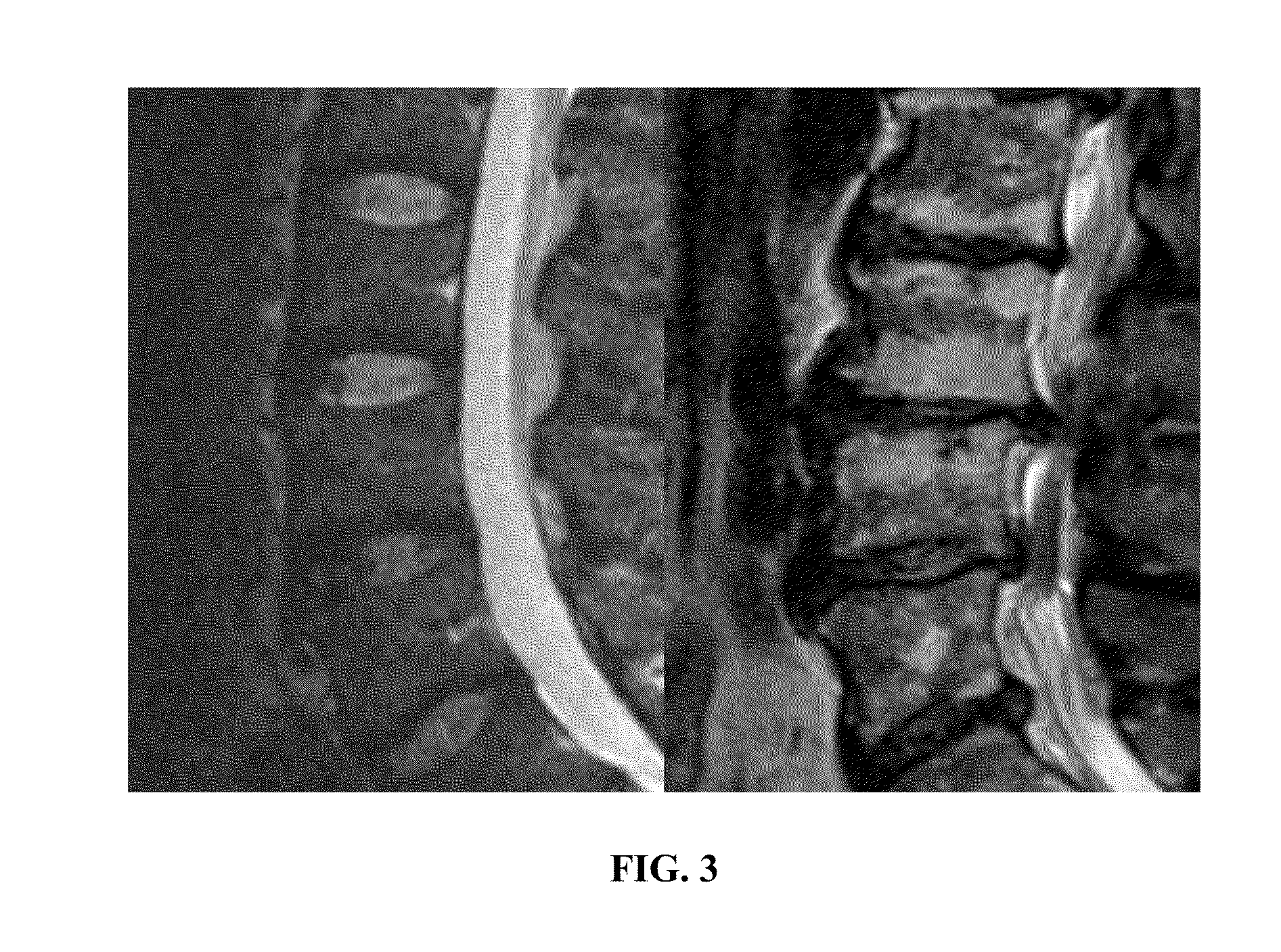Measure of disc degeneration and pathology
a disc degeneration and pathology technology, applied in the field of system and computerreadable media, can solve the problems of disc degeneration in common painful spinal disorders, large amount of clinical imaging and spine surgery, and inability to accurately assess the physiological condition of spinal intervertebral discs,
- Summary
- Abstract
- Description
- Claims
- Application Information
AI Technical Summary
Benefits of technology
Problems solved by technology
Method used
Image
Examples
example 1
Validation of the SpIn Measures of Disc Degeneration
[0101]Validation of the claimed methods of the present disclosure and the obtained values was performed as follows. A first sample of 232 men (age 35 -70 years) from the population-based Finnish Twin Cohort were each imaged; 108 of these subjects were reimaged 15 years later. Such images were MRI images of the lumbar spine. The first confirmatory sample including 87 men, each reimaged 10 years later. All subjects were imaged with Siemens' scanners and for the 107 and 87 subjects that were reimaged, Pfirrmann scores were also available.
[0102]Two confirmatory groups of 347 and 564 subjects, respectively, seeking care for painful back-related problems, ranging in age from 18 to 86 years, were imaged with one of three scanners (Phillips “Achieva”; Hitachi “Aperto” or Siemens “Avanto”). The MRI image included the lumbar region, in particular the L3-L4 disc.
[0103]To examine the construct validity of the values obtained (SpIn) from signal...
PUM
 Login to View More
Login to View More Abstract
Description
Claims
Application Information
 Login to View More
Login to View More - R&D
- Intellectual Property
- Life Sciences
- Materials
- Tech Scout
- Unparalleled Data Quality
- Higher Quality Content
- 60% Fewer Hallucinations
Browse by: Latest US Patents, China's latest patents, Technical Efficacy Thesaurus, Application Domain, Technology Topic, Popular Technical Reports.
© 2025 PatSnap. All rights reserved.Legal|Privacy policy|Modern Slavery Act Transparency Statement|Sitemap|About US| Contact US: help@patsnap.com



